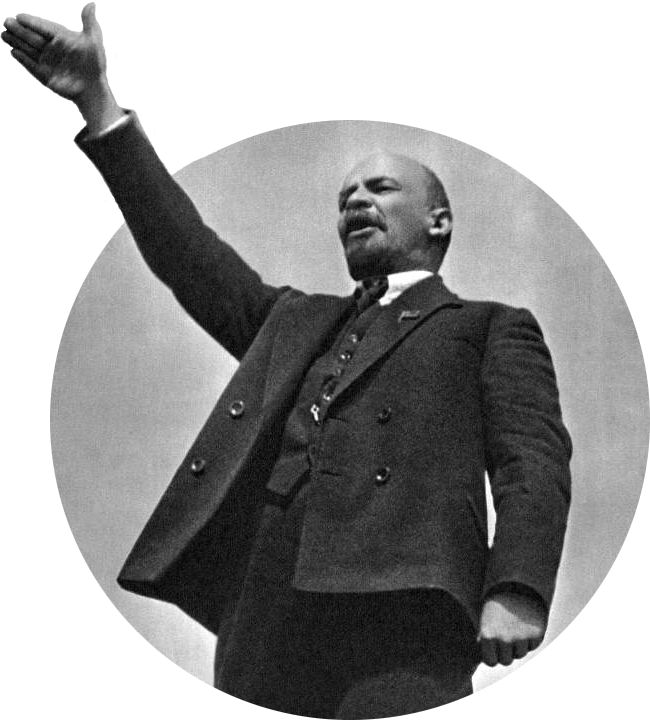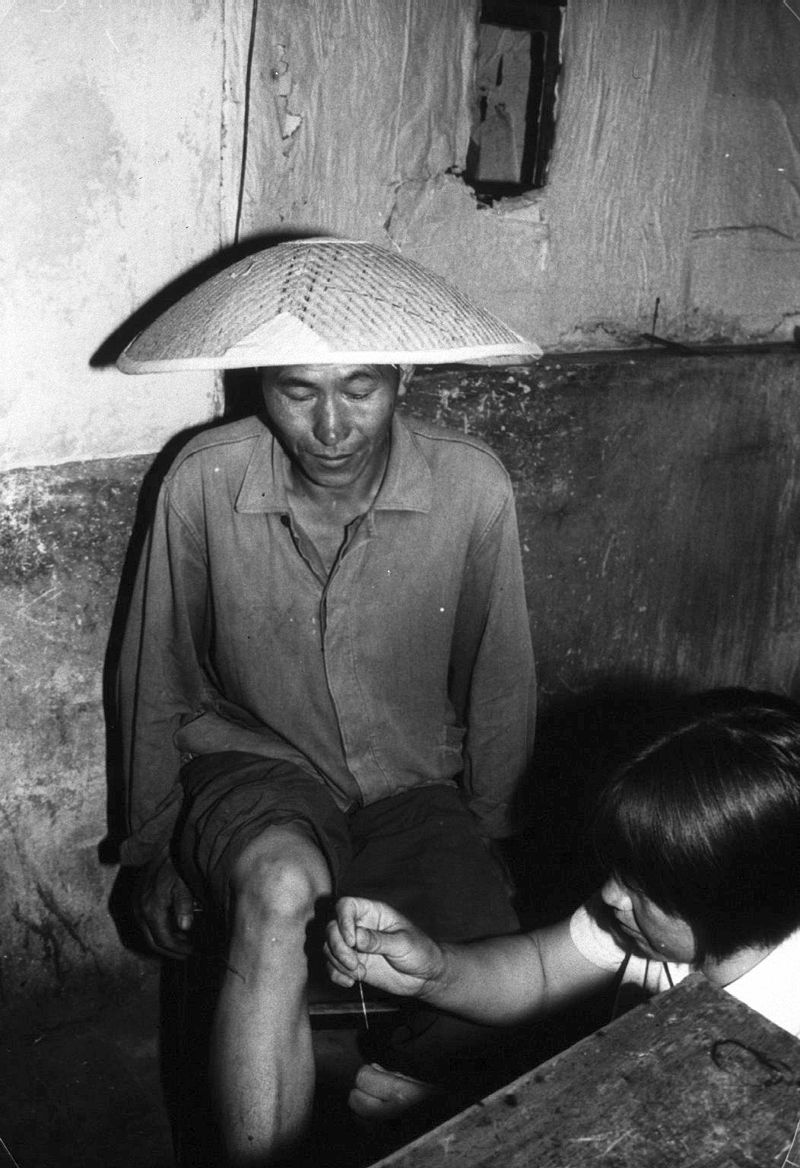No edit summary Tag: Visual edit |
m (Cleaned up citations that weren't missing, most citations missings. Added relevation maintainance categories) Tag: Visual edit |
||
| Line 1: | Line 1: | ||
{{External article cleanup|date=February 2023}} | |||
[[File:BarefootDoctor.jpg|thumb|A barefoot doctor performs acupuncture on a man]] | [[File:BarefootDoctor.jpg|thumb|A barefoot doctor performs acupuncture on a man]] | ||
'''Barefoot doctors''' were healthcare providers who underwent basic medical training and worked in rural villages in [[China]]. They included farmers, folk healers, rural healthcare providers, and recent middle or secondary school graduates who received minimal basic medical and [[paramedic]]al education.<ref name=":4" /><ref name=":3" /><ref name=":15" /> Their purpose was to bring healthcare to rural areas where urban-trained doctors would not settle. They promoted basic [[hygiene]], [[preventive healthcare]], and [[family planning]] and treated common [[disease|illnesses]].<ref name=":16" /> The name comes from southern farmers, who would often work barefoot in the rice paddies, and simultaneously worked as medical practitioners.<ref name=":4" /> | '''Barefoot doctors''' were healthcare providers who underwent basic medical training and worked in rural villages in [[China]]. They included farmers, folk healers, rural healthcare providers, and recent middle or secondary school graduates who received minimal basic medical and [[paramedic]]al education.<ref name=":4" /><ref name=":3" /><ref name=":15" /> Their purpose was to bring healthcare to rural areas where urban-trained doctors would not settle. They promoted basic [[hygiene]], [[preventive healthcare]], and [[family planning]] and treated common [[disease|illnesses]].<ref name=":16" /> The name comes from southern farmers, who would often work barefoot in the rice paddies, and simultaneously worked as medical practitioners.<ref name=":4" /> | ||
In the 1930s, the [[Rural Reconstruction Movement]] had pioneered village health workers trained in basic health as part of a coordinated system, and there had been provincial experiments after 1949, but after Mao Zedong's healthcare speech in 1965 the concept was developed and institutionalized.<ref name=":14" /> China's [[health policy]] began to emphasize the importance of barefoot doctors after Mao Zedong's June 26 directive, and, in 1968, the barefoot doctors program became integrated into national policy.<ref name="zhang">{{ | In the 1930s, the [[Rural Reconstruction Movement]] had pioneered village health workers trained in basic health as part of a coordinated system, and there had been provincial experiments after 1949, but after Mao Zedong's healthcare speech in 1965 the concept was developed and institutionalized.<ref name=":14" /> China's [[health policy]] began to emphasize the importance of barefoot doctors after Mao Zedong's June 26 directive, and, in 1968, the barefoot doctors program became integrated into national policy.<ref name="zhang">{{Citation |authors= |date= |title=China's barefoot doctor: past, present, and future |journal= |volume=372 |issue=9653 |pages= |doi=10.1016/S0140-6736(08)61355-0 |pmid=18930539 |s2cid=44522656|author=Daqing Zhang, Paul U Unschuld|year=2008|page=1865–1867|title-url=https://sci-hub.st/10.1016/S0140-6736(08)61355-0|publisher=Lancet}} | ||
</ref> These programs were called "rural cooperative medical systems" (RCMS) and worked to include community participation with the rural provision of health services.<ref name="carrin">{{ | </ref> These programs were called "rural cooperative medical systems" (RCMS) and worked to include community participation with the rural provision of health services.<ref name="carrin">{{Citation |author=Carrin G, Ron A, Hui Y, Hong W, Tuohong Z, Licheng Z, Shuo Z, Yide Y, Jiaying C, Qicheng J, Zhaoyang Z, Jun Y, Xuesheng L |title=The reform of the rural cooperative medical system in the People's Republic of China: interim experience in 14 pilot counties |journal=Social Science & Medicine |volume=48 |issue=7 |pages=961–72 |date=April 1999 |pmid=10192562 |doi=10.1016/S0277-9536(98)00396-7 }} | ||
</ref> | </ref> | ||
Barefoot doctors became a part of the [[Cultural Revolution]], which also radically diminished the influence of the [[Ministry of Health of the People's Republic of China|Ministry of Health]], which was filled with Western-trained doctors. Still, barefoot doctors continued to introduce scientific medicine to rural areas by merging it with [[traditional Chinese medicine|Chinese medicine]].<ref name=":4" /> With the onset of market-oriented reforms after the Cultural Revolution, political support for barefoot doctors dissipated, and "health-care crises of peasants substantially increased after the system broke down in the 1980s."<ref name="zhang" /> Despite the fact that the official barefoot doctor system came to an end, the legacy of the barefoot doctors inspired the 1978 [[World Health Organization]] conference on [[primary health care]] and the resulting [[Alma Ata Declaration]].<ref name=":1" /> | Barefoot doctors became a part of the [[Cultural Revolution]], which also radically diminished the influence of the [[Ministry of Health of the People's Republic of China|Ministry of Health]], which was filled with Western-trained doctors. Still, barefoot doctors continued to introduce scientific medicine to rural areas by merging it with [[traditional Chinese medicine|Chinese medicine]].<ref name=":4" /> With the onset of market-oriented reforms after the Cultural Revolution, political support for barefoot doctors dissipated, and "health-care crises of peasants substantially increased after the system broke down in the 1980s."<ref name="zhang" /> Despite the fact that the official barefoot doctor system came to an end, the legacy of the barefoot doctors inspired the 1978 [[World Health Organization]] conference on [[primary health care]] and the resulting [[Alma Ata Declaration]].<ref name=":1" /> | ||
== References == | ==References== | ||
<references /> | |||
[[Category:Pages needing references]] | |||
Revision as of 12:57, 6 February 2023
 | Some parts of this article were copied from external sources and may contain errors or lack of appropriate formatting. You can help improve this article by editing it and cleaning it up. (February 2023) |

Barefoot doctors were healthcare providers who underwent basic medical training and worked in rural villages in China. They included farmers, folk healers, rural healthcare providers, and recent middle or secondary school graduates who received minimal basic medical and paramedical education.[1][2][3] Their purpose was to bring healthcare to rural areas where urban-trained doctors would not settle. They promoted basic hygiene, preventive healthcare, and family planning and treated common illnesses.[4] The name comes from southern farmers, who would often work barefoot in the rice paddies, and simultaneously worked as medical practitioners.[1]
In the 1930s, the Rural Reconstruction Movement had pioneered village health workers trained in basic health as part of a coordinated system, and there had been provincial experiments after 1949, but after Mao Zedong's healthcare speech in 1965 the concept was developed and institutionalized.[5] China's health policy began to emphasize the importance of barefoot doctors after Mao Zedong's June 26 directive, and, in 1968, the barefoot doctors program became integrated into national policy.[6] These programs were called "rural cooperative medical systems" (RCMS) and worked to include community participation with the rural provision of health services.[7]
Barefoot doctors became a part of the Cultural Revolution, which also radically diminished the influence of the Ministry of Health, which was filled with Western-trained doctors. Still, barefoot doctors continued to introduce scientific medicine to rural areas by merging it with Chinese medicine.[1] With the onset of market-oriented reforms after the Cultural Revolution, political support for barefoot doctors dissipated, and "health-care crises of peasants substantially increased after the system broke down in the 1980s."[6] Despite the fact that the official barefoot doctor system came to an end, the legacy of the barefoot doctors inspired the 1978 World Health Organization conference on primary health care and the resulting Alma Ata Declaration.[8]
References
- ↑ 1.0 1.1 1.2 Cite error: Invalid
<ref>tag; no text was provided for refs named:4 - ↑ Cite error: Invalid
<ref>tag; no text was provided for refs named:3 - ↑ Cite error: Invalid
<ref>tag; no text was provided for refs named:15 - ↑ Cite error: Invalid
<ref>tag; no text was provided for refs named:16 - ↑ Cite error: Invalid
<ref>tag; no text was provided for refs named:14 - ↑ 6.0 6.1 Daqing Zhang, Paul U Unschuld (2008). China's barefoot doctor: past, present, and future, vol. 372. Lancet. doi: 10.1016/S0140-6736(08)61355-0 [HUB]
- ↑ Carrin G, Ron A, Hui Y, Hong W, Tuohong Z, Licheng Z, Shuo Z, Yide Y, Jiaying C, Qicheng J, Zhaoyang Z, Jun Y, Xuesheng L (April 1999). The reform of the rural cooperative medical system in the People's Republic of China: interim experience in 14 pilot counties. Social Science & Medicine, vol.48 (pp. 961–72). doi: 10.1016/S0277-9536(98)00396-7 [HUB]
- ↑ Cite error: Invalid
<ref>tag; no text was provided for refs named:1